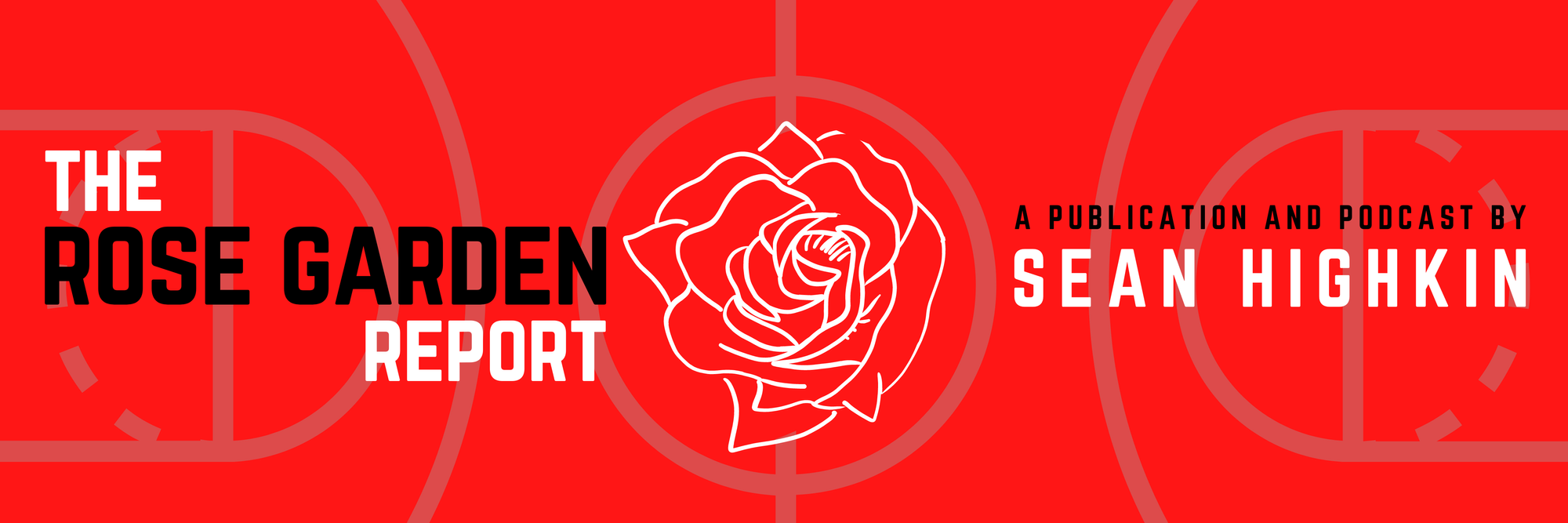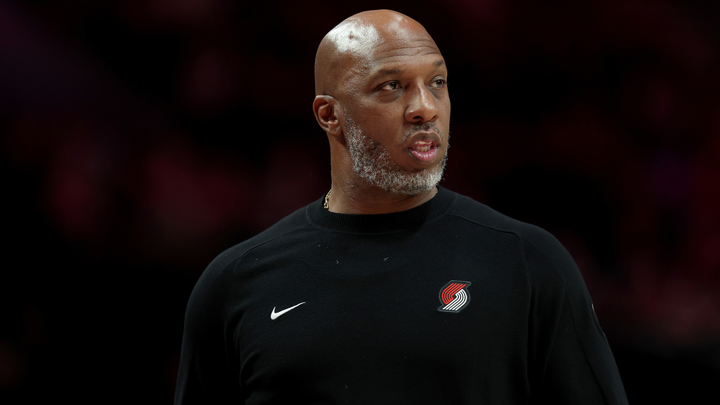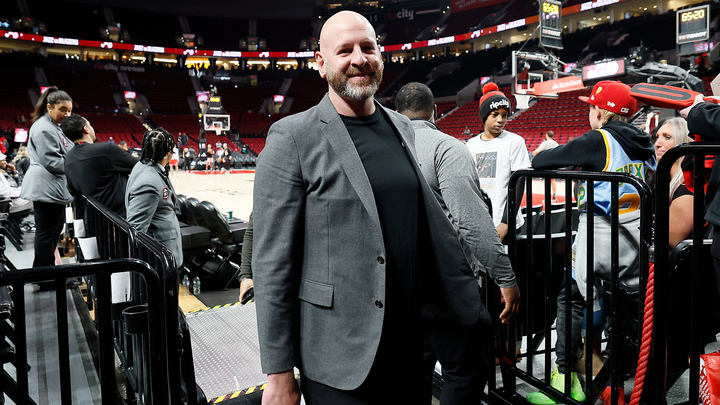Is Robert Williams III a Trade Chip or a Building Block for the Trail Blazers?
The finally-healthy Williams has been good enough to be legitimately seen as a part of Portland's long-term future.

The four games Robert Williams III has played this season since returning from injury has served as a reminder of why the Trail Blazers wanted him in the first place.
The game he played on Tuesday in Portland’s Emirates NBA Cup™️ win over Minnesota was particularly impressive. With Deandre Ayton out, Williams played a season-high 25 minutes and finished with 19 points, nine rebounds, three assists, three steals and three blocks. He completely changed the game defensively and, at the other end of the floor, finished a few lobs that didn’t look like they’d come from someone just over a year removed from major knee surgery.
He looked, in other words, a lot like the player he was for five seasons in Boston, where he was a Defensive Player of the Year candidate and a key part of the Celtics’ 2022 Finals run.
The Rose Garden Report is a fully independent, reader-supported publication. Purchasing a premium subscription unlocks exclusive content and helps sustain the website and make the coverage of the Portland Trail Blazers the best it can be.
“He's just a winner,” Chauncey Billups said after that game. “He does every single thing that you need him to do. His feel for the game is really high-level, his IQ is really high-level. His rebounding, his blocked shots, his voice…he's so impactful, man. His energy is infectious. That's the reason why every team he's on, he's everybody's favorite teammate. You can say that for a lot of different reasons.”
Since Williams has been in Portland, his production, team-friendly contract and extensive injury history have made him the subject of as much trade speculation as anyone else on the roster. Between now and the Feb. 6 deadline, he’ll be the subject of plenty more trade speculation. Plenty of playoff hopefuls (Oklahoma City, New Orleans, Indiana) have lost big men to injuries to start the year and many of them will undoubtedly call the Blazers to see if they can get Williams for relatively cheap due to his own injury history. The fact that the Blazers drafted another center, Donovan Clingan, with the No. 7 overall pick in June isn’t doing anything to quell that talk.
One problem: Williams has been too good, and fit too well, for anyone to assume Joe Cronin will be looking to move him. It’s quietly become one of the most interesting and impactful subplots of the Blazers’ season, and there’s no easy answer.
When the Blazers traded for Williams right before the start of last year’s training camp in the deal that sent Jrue Holiday to Boston in an extension of the Damian Lillard trade to the Bucks earlier that week, they did not do it with the intention of immediately flipping him to a contender for more draft picks.
They did it because they thought he, maybe even more so than Ayton, could be a long-term building block. When healthy, he’s exactly the kind of big man that fits perfectly into the ethos of Cronin’s front office, which from day one has prioritized toughness, athleticism and defensive versatility. And at 25 at the time of the trade (he turned 27 last month), he wasn’t so much older than Scoot Henderson and Shaedon Sharpe that he couldn’t be a part of what they were building for the next several years.
The torn knee ligament Williams suffered six games into his first season in Portland was unfortunate but not surprising. The reason the Celtics were willing to entertain trading someone as good as him was the same reason they were able to sign him to the contract he’s on (just $12.4 million this season and $13.2 million next season, essentially mid-level money): he was never able to stay on the floor consistently. In five seasons in Boston, he played 50 or more games just twice and never more than 35 besides that. He came back early from a left meniscus surgery to play in the playoffs in 2022, the year the Celtics made the Finals.
After the right knee injury that cut short last season with the Blazers, he’s now had major surgeries on both knees. And he missed most of training camp and the beginning of this season with a hamstring injury. Already since he’s been back this season, he sat out on the Blazers’ last back-to-back and Billups indicated that’s going to continue to be the case for the foreseeable future.
It puts the Blazers in an interesting spot: Williams’ health history will not only limit his trade value, but also limit the degree to which they can count on him as a long-term building block. If he stays on the floor and keeps producing at the level he has so far, what teams are willing to give up for him may increase, but so will the Blazers’ inclination to just keep him if he’s that good.
Injury risk aside, Williams makes by far the most sense for the Blazers to try and keep long-term. Jerami Grant isn’t on the same timeline as the rest of the core players and has clear value to playoff teams, even on the contract he’s on. Anfernee Simons, by the time he’s up for his next contract in 2026, will be in a similar position. Ayton has been better in Portland than he’s given credit for, and I’ve continued to push back against the idea that keeping him around is hurting Clingan’s development in the short term. But Clingan’s arrival clearly signals that Ayton isn’t a long-term piece.
Williams checks just about every box to be someone the Blazers should want to keep around for the long haul.
At 27, he’s older than the other players that could be considered part of Portland’s “core,” but he’s still several years away from turning 30. At $12.4 million on the books, he isn’t so expensive that having him on the roster will limit the ability to add another impact player by trade or free agency when the time comes. Offensively, his playmaking and finishing ability is a better match for Henderson and the Blazers’ other guards than Ayton’s midrange-heavy game is. Defensively, there aren’t many big men in the league that are as impactful as he is. Usage-wise, he’s never going to be able to play starter minutes, so he isn’t going to block Clingan’s eventual development into that role.
And off the court, he’s the veteran with the loudest voice on a team that has lamented the lack of an “alpha” personality in the time since Lillard was traded. The Blazers didn’t really get to see that last season, because Williams was away from the team for so much of the year rehabbing after his knee surgery. But his personality is one everyone gravitates towards, and having made several deep playoff runs with the Celtics, including a trip to the Finals, his words and experience carry more weight than anyone else’s.
Doesn’t that sound like someone any rebuilding team would want to stick around as long as possible?
The only real argument for trading Williams sooner than later is the idea that his body is a ticking time bomb and if they don’t get something for him now, they run the risk of him suffering another serious injury down the road. And that’s a legitimate argument that can’t be completely dismissed. His medical history is what it is.
But this front office, unlike most rebuilding teams, has prioritized bringing in good players over collecting a pure volume of future draft picks when they do make trades. It’s why they gave up as much as they did for Deni Avdija over the summer—they saw him as the kind of wing who can help them not only now but several years down the road, when he’ll be just entering his prime. Williams also fits that mold—except for the injuries.
This is what Cronin and his staff will have to weigh between now and February. Will any team be willing to look past Williams’ litany of injuries to offer what he’s worth when he’s on the floor? And if he is that good and that available, wouldn’t he be worth more to the Blazers to just keep?
There are no easy answers.




Comments ()